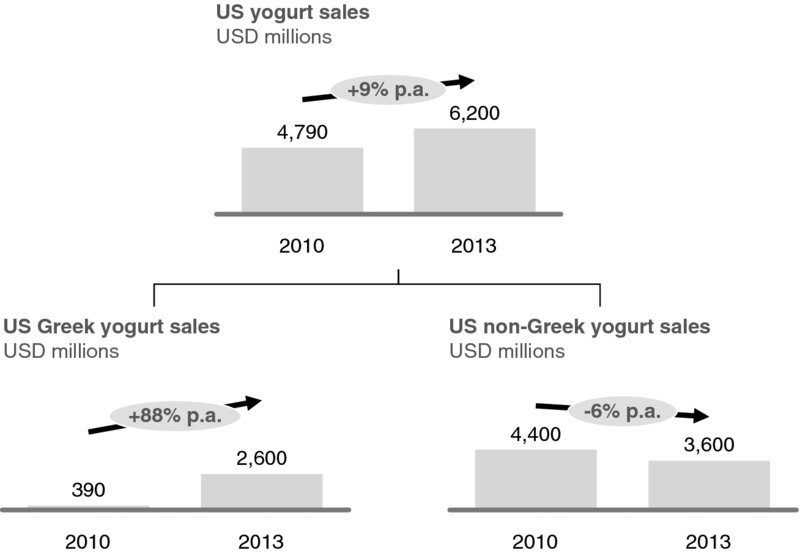2 — Allocation: Put your money where your strategy is
Why does budget allocation matter?
Let's talk about yogurt. Why? Because it's a booming business. Or is it? Between 2010 and 2013, the US yogurt market grew from USD 4.8 billion to USD 6.2 billion, an increase of 29 percent.1 That made yogurt one of the fastest-growing non-durable categories in the US at the time. But when you take a closer look at the yogurt boom, you find that sales of regular yogurt were actually declining during the three-year period in question. The growth of the category as a whole was driven by a single subcategory: Greek yogurt. Greek yogurt sales increased more than fivefold, from USD 390 million to USD 2.6 billion (Exhibit 2.1). The bulk of that growth was generated in the Northeast of the US. What at first looked like a remarkable growth story turned out to be a story of widespread decline overcompensated by a local upsurge in a single subcategory. Additionally, a large part of the growth was not captured by any of the incumbent brands, but by Chobani, a start-up company operating out of the booming region.

Exhibit 2.1 Greek versus non-Greek yogurt sales in the US.
Source: Nielsen
This type of insight is often lost in the averages of national industry reports, to say nothing of international growth barometers. But a McKinsey study covering more than 800 companies over a period of 13 years reveals ...
Get Marketing Performance now with the O’Reilly learning platform.
O’Reilly members experience books, live events, courses curated by job role, and more from O’Reilly and nearly 200 top publishers.

